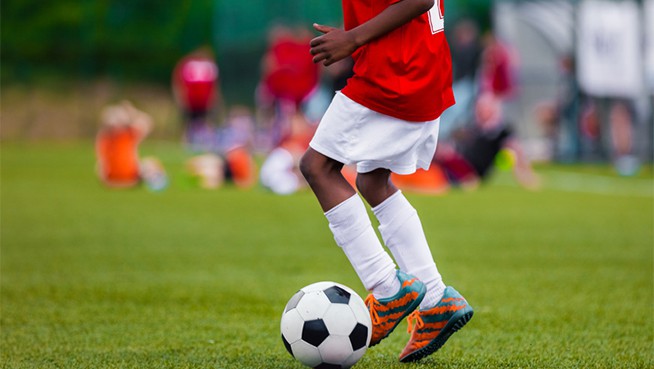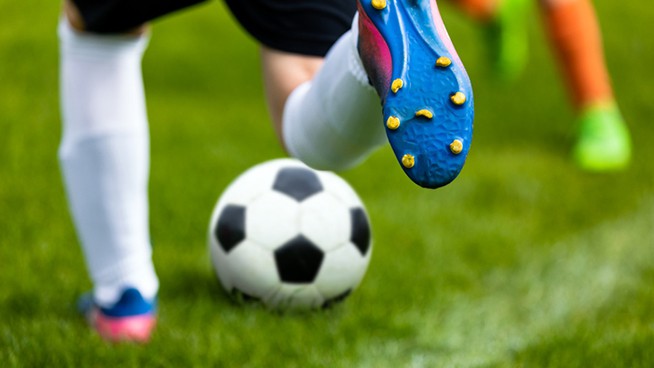Swimming Straight With USA
The gold standard in swimming can be summed up in two words. But if you’re thinking they begin with “M” and “P” and rhyme with “cycle helps,” you’re off center. The words are “straight ahead.”
It seems obvious, but it’s often overlooked. You can almost hear your fourth grade teacher saying it, can’t you? “The shortest distance between two points is a straight line.” Well, the rule applies to swimming, too.
Russell Mark, biomechanics coordinator for USA Swimming, shares his strategies for correcting poor form and pushing swimmers from the pool to the podium.
STACK: Why do some swimmers tend to swim at an angle toward the lane lines?
Russell Mark: It is a habit that develops from workouts and practices, because in practice you will swim in a circle. You swim all the way down the right side of the lane so that other teammates can use the lane. [Swimmers] will subconsciously tend to do that when they are in the lane alone, just from doing it so much in practice.
STACK: What do you coach your swimmers to do during practice to overcome the problem?
RM: When swimmers have an opportunity to swim in the lane by themselves during a workout, whether they are sprinting or doing some race type work, they need to make sure that they are mindful of where they are, and swimming and forcing themselves in the middle.
STACK: Any tips for swimming straight in practice or a race?
RM: The best way is to follow the black line at the bottom of the pool. I think if you have your head in the right position, you will be able to follow it.
STACK: What is the proper head position?
RM: The head should stay low, looking toward the bottom, but do not bury the head or tuck the chin. Just keep the head in a good natural position, like when you are walking with good posture. If you are walking with good posture, your head is not in front of your body or looking up toward the sky; it’s just looking straight ahead in a neutral position. The reason [proper head position] helps is that it keeps the hips up to create great body position, and it makes it easy to rotate your arms.
STACK: What if a swimmer drifts toward the lane line?
RM: One of the keys is to move [back to the center] gradually instead of in one or two strokes. Just gradually make it over to the middle. There is no reason to make any sudden changes, because it ends up using unnecessary energy.
RECOMMENDED FOR YOU
MOST POPULAR
Swimming Straight With USA
The gold standard in swimming can be summed up in two words. But if you’re thinking they begin with “M” and “P” and rhyme with “cycle helps,” you’re off center. The words are “straight ahead.”
It seems obvious, but it’s often overlooked. You can almost hear your fourth grade teacher saying it, can’t you? “The shortest distance between two points is a straight line.” Well, the rule applies to swimming, too.
Russell Mark, biomechanics coordinator for USA Swimming, shares his strategies for correcting poor form and pushing swimmers from the pool to the podium.
STACK: Why do some swimmers tend to swim at an angle toward the lane lines?
Russell Mark: It is a habit that develops from workouts and practices, because in practice you will swim in a circle. You swim all the way down the right side of the lane so that other teammates can use the lane. [Swimmers] will subconsciously tend to do that when they are in the lane alone, just from doing it so much in practice.
STACK: What do you coach your swimmers to do during practice to overcome the problem?
RM: When swimmers have an opportunity to swim in the lane by themselves during a workout, whether they are sprinting or doing some race type work, they need to make sure that they are mindful of where they are, and swimming and forcing themselves in the middle.
STACK: Any tips for swimming straight in practice or a race?
RM: The best way is to follow the black line at the bottom of the pool. I think if you have your head in the right position, you will be able to follow it.
STACK: What is the proper head position?
RM: The head should stay low, looking toward the bottom, but do not bury the head or tuck the chin. Just keep the head in a good natural position, like when you are walking with good posture. If you are walking with good posture, your head is not in front of your body or looking up toward the sky; it’s just looking straight ahead in a neutral position. The reason [proper head position] helps is that it keeps the hips up to create great body position, and it makes it easy to rotate your arms.
STACK: What if a swimmer drifts toward the lane line?
RM: One of the keys is to move [back to the center] gradually instead of in one or two strokes. Just gradually make it over to the middle. There is no reason to make any sudden changes, because it ends up using unnecessary energy.











